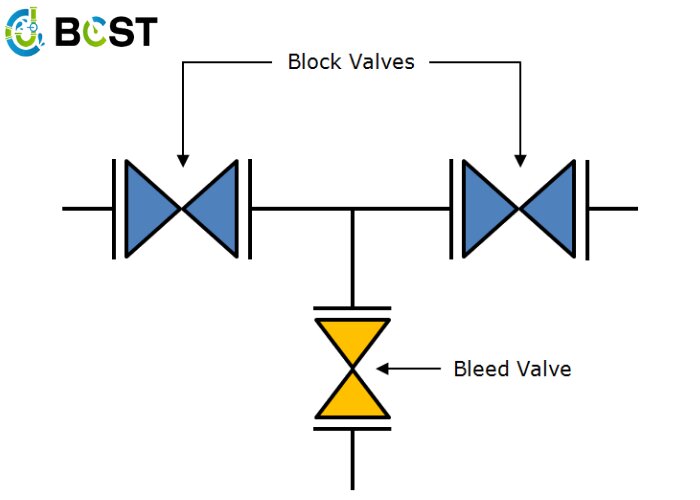
Safety and reliability are paramount when it comes to fluid control systems. That’s where Block and Bleed Valves step in as unsung heroes. These essential components are crucial in isolating, monitoring, and maintaining fluid flow within pipelines and industrial processes.
In this blog, we’ll look closer at the vital function of block and bleed valves. Exploring how they work and why they are indispensable in various industries. Whether you’re an engineer or a technician or simply curious about how these valves ensure safety and efficiency in complex fluid systems, our in-depth exploration will provide valuable insights.
This blog will help you understand the essential function of block and bleeding valves and why they are the linchpin of fluid control systems.
A Block and Bleed valve is made up of one valve for blocking or isolating the flow (the “block”) and another valve for bleeding or relieving pressure (the “bleed” valve).
The primary purpose of a BB valve is to isolate or block fluid flow in a pipeline and then relieve any pressure that might be trapped between the two valves.
BB valves are often used for basic maintenance or testing tasks and do not provide high security against fluid leakage.

- Single Block and Bleed Valve
- Double Block and Bleed Valve
- Single-Unit Double Block and Bleed Valve
Single Block and Bleed Valve
The single block and bleed valve system consists of one and one bleed valve. A single block and bleed valve is used in less critical processes than a low-pressure system. We can use a single block and bleed valve system when the process fluid is not flammable or toxic. Here, we have one block valve, usually a ball valve, and one bleed valve, usually a needle valve. To isolate some equipment, we must first block process fluid flow by closing the block valve and then open the bleed valve to vent or remove excess process fluid between the equipment and the block valve. This is the operation of a single block and bleed valve.

Double Block and Bleed Valve
It consists of two separate block vales and one bleed valve between them, which drains liquid. It has three valves.
The definition of a double-block and bleed valve is provided by the “Single valve with two seating surfaces that, in the closed position, provides a seal against pressure from both the valve’s ends with a way of venting/bleeding the chamber between the seating surfaces.”
A double block-and-bleed valve is defined by OSHA as “The closure of a line, duct or pipe by closing and locking or tagging two inline valves and by opening and the line between the two closed valves, lock or tag a drain or vent valve.”

Single-Unit Double Block and Bleed Valve
Here, we have three valves, two block valves, and one bleed valve in a single unit, which has many advantages, like saving space, less weight, and ease of operation. It isolates the system more effectively than other options. The valve between the two block valves is called a bleed valve. After isolation, the bleed valve drains fluid between two block valves from the cavity.
- To isolate particular equipment or pipes for maintenance
- Used in oil and gas industries
- Meter calibration
- Remove equipment for cleaning
- Provides isolation between different sections of a pipeline.
- Reduces the risk of fluid leakage.
- Simplifies maintenance and testing procedures.
- Enhances system safety by preventing cross-contamination.
- Saves space compared to multiple separate valves.
- Offers a cost-effective solution for fluid control.
- Minimizes the potential for fugitive emissions.
- Allows for efficient pressure relief and bleeding.
- Improves system integrity and reliability.
- Versatile and applicable in various industries and applications.
Conclusion
In conclusion, Block and Bleed valves are the unnamed heroes in the fluid control system , it is vital for the safety, integrity and efficiently of the pipelines and industrial processes.They provide important isolation,leak of pressure and testing function , increased the risks of the fluid leaking, prevent the cross-infection,and simplifying the maintenance work. These valves have many advantages;saving the space and costs,improving the security of the system and through increasing the unorganized emission to achieve the environment benefits.Knowing the function deeply is vital for use them efficiently and ensuring the safety and reliable operation of complex fluid system Globe valves and bleach valves are indispensable in the oil and gas industry, petrochemical plants or a variety of applications. These unassuming components act as silent sentinels, maintaining the smooth, safe and reliable operation of fluid systems.






